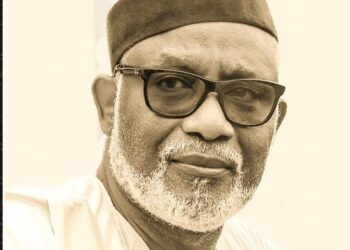
When Hamisu Gurgu closed down GDC in 1983, its mantle was taken over by Late Sidi Musa, a half-Tripolitanian Arab based in Sanka quarters in Kano city. Sidi Musa was an accomplished poet, using his Arab background to compose songs of sheer beauty. His turning point came in 1972 when he went on the pilgrimage to Makkah. It was while there that he came across a tape of Muhammad Rafi, the famous Indian playback singer. Ironically, this particular tape was not based on any Hindi film; it was a regular litany praising Allah the Creator. This captivated Sidi Musa, and he composed his own song using Muhammad Rafi’s meter—thus starting his career as an adapter of Hindi musical styles, a practice he more or less perfected over the following 10 years, although with a significant focus on the songs in the praise of the Prophet Muhammad (SAW).
On learning that the GDC had closed down Sidi Musa contacted Hamisu Gurgu and offered him a freelance job as a cinematographer for a series of five videos—all based on appropriated Hindi films Hamisu Gurgu obliged and throughout 1984 they produced the following videos: Baƙi Daga Sanka (Dosnumbari dir. Madan Mohla, 1976), So Cuta Ne (Kabhie Kabhie, dir. Yash Chopra, 1976), Rabuwa (Bidaai, dir. L. V. Prasad, 1974), and two whose Hindi film originals he could not remember: Ƙarfen Ƙafa, Ni Da Kai.
The use of the Hindi film rip-offs was based on the simple fact that young audiences love them, seeing them as novelties, especially the song and dance routines. For instance, So Cuta Ne alone contained eight songs, while Baƙi Daga Sanka had six songs. Thus, Sidi Musa literally invented the technique of adapting Hindi film songs to Hausa lyrics, singing songs of sadness and joy. GDC simply ripped off the songs he did which were commercially available and used them in their films—regardless of whether or not they were the actual songs adapted from the corresponding Hindi film they were ripping off.
They created their “soundtrack” songs by using three tape recorders. One will play the original Hindi film and the other will re-record it. When the original tape gets to where there was singing, they will lower the volume, and Sidi Musa’s voice will be overlaid from a third tape recorder. This voice will be singing in Hausa but using a Hindi song meter (kari). After the vocal stretch has passed, the “sound engineer”, as it were, will turn up the volume of the original player and continue recording. This procedure was repeated until all the soundtracks of the film (available easily on compact tapes) were re-recorded into Hausa.
It was this singing using Hausa words but to Hindi film beat and Hindi song meter that proved a massive crowd-puller for the GDC, attracting young Hausa viewers who were surprised to see a film with Hausa actors, speaking Hausa language. This was a cinematic technique that would be made famous and more professionally by Buzo Danfillo in his Algaita Studios as a genre of transnational Hausa films labeled ‘Hausa Indiya”.
Between 1982 to 1984, the trio of Sani Lamma, Hamisu Gurgu and Sidi Musa produced and freely screened 17 amateur Hausa home videos. Interestingly one, by Sani Lamma (outsourced), The Riders, was in English! There was no commercial motive – just clean fun from enthusiasts who had the equipment and the gumption to jump into unchartered waters without a map. Their sacrifices gave birth an industry.
The military coup of December 1983 ushered in a new stern regime (that of Gen. Muhammad Buhari) with strong social orientation and public accountability in the form of a program tagged War Against Indiscipline (WAI).
By 1984 the military authorities in Kano started seeing the amateur film productions, especially the singing as aspects of indiscipline in a traditional society, and there was a clamp down. This led to the closure of Sanka Film Productions.
Sidi Musa subsequently joined Ushaku Nabiyyi in January 1986, as part of the group, but not its leader. The group was formed in the wake of opposition to film and devoted its performances to singing the praises of the Prophet Muhammad (thus their name, Lovers of the Prophet). The group included Lawan Yaro Magashi, Ahmad Baffajo Marmara, Auwalu Iguda Yakasai, Bala Musa and Sani Garba SK among its founding member. Their performances were accompanied by bandir (frame drum). In 1989, however, seeking a new direction for his talents, Sidi Musa formed Ahbabur Rasul in 1989, an a Capella group to focus also on the praises of Prophet Muhammad—which led to a whole new genre of Hausa music.
The Hindi film song inspired mimetic performance that, as usual, became the first in Kannywood that was to become the defining characteristic of Kannywood. The progenitor was Sidiya Baƙar Indiya.




